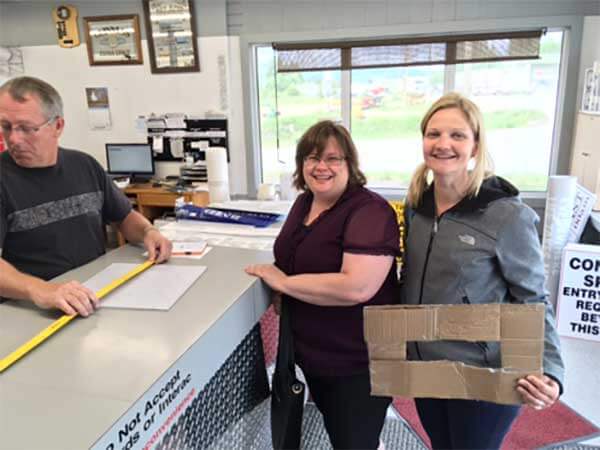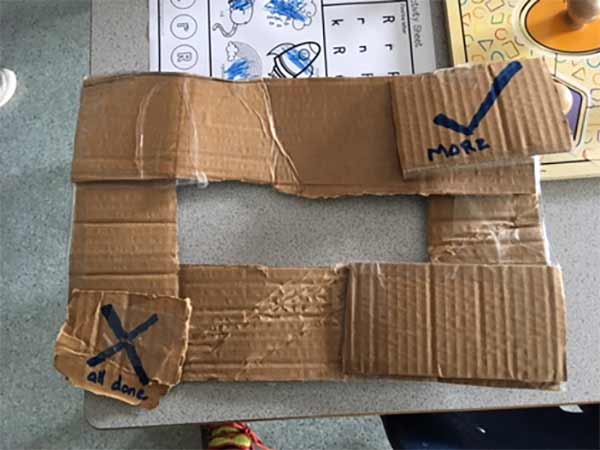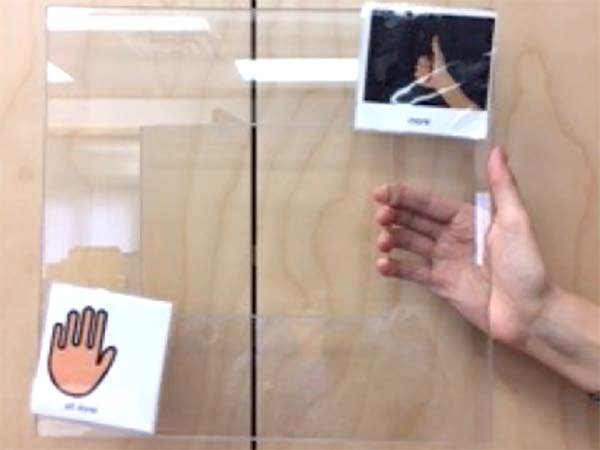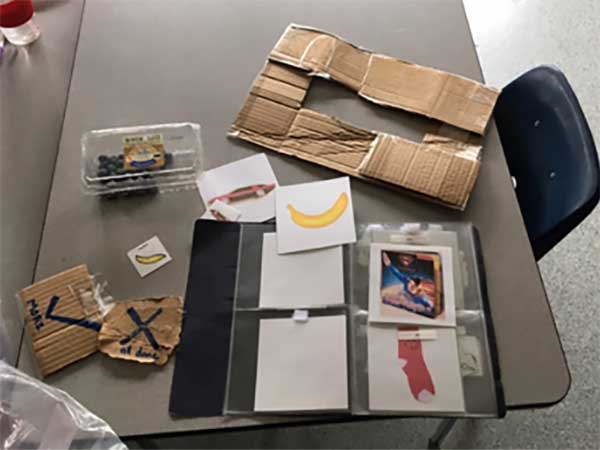Keeping their Eye on Communication in Quesnel
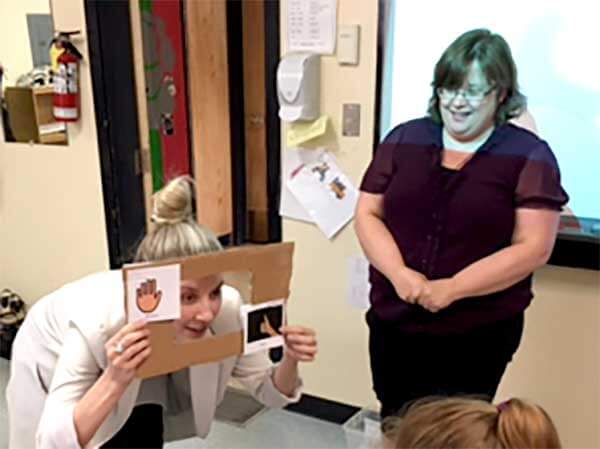
Many teams working with students who have significant physical access challenges look to eye gaze technology as a possible solution. In this story, Stacey Harpell, helps an SD#28 team in Quesnel develop a no-tech solution for a student who will hopefully develop the skills needed to successfully access an AAC device in the future.
Recently, I flew into Quesnel and, first thing the next morning, met with the AAC team – the resource teacher, educational assistants, physical therapist, occupational therapist, and two speech-language pathologists – to go over the student’s level of progress and the 5 modes of Augmentative Alternative Communication (AAC).
Using a SET-BC resource called the low technology AAC kit we worked together to review the level of symbol the student needs to request specific items or routines. The brain can perceive objects, real life pictures or representational pictures differently. The team collaborated together to decide the size of the symbols and how to have the student choose the vocabulary (for example, reaching out and touching an object or looking toward the symbol). After we decided that using eye gaze was best for the student we built an eye transfer, or E-TRAN, board. We actually built a few ‘first versions’ of the board. Once we decided on some specific core (frequently used) vocabulary and fringe (less frequently used) vocabulary, we fashioned and customized a cardboard ‘practice’ E-TRAN board.
The team then modelled making simple requests using eye gaze of quickly reinforced activities (i.e., playing with the banana, requesting to dance…). Once we modelled a few times (to teach the student how to use the board), we asked the student to use the device. Strong and immediate choices were made even when items were changed around the board.
After this trial, the team decided this was a successful communication option, and chose to have an official E-TRAN board made. After a few phone calls we found a sign shop and everyone piled into a car to make the request face to face. As you see in the photo, the E-TRAN board was able to be customized for the student and communication partner.
I really enjoy my work as a SET-BC Tier 3 consultant because the professionals I meet around the Province come together in unique, energized ways to create smart, measurable communication options for their students. I look forward to hearing about the student’s progress towards effective communication and hope I have another opportunity to visit the lovely BC interior town of Quesnel very soon!
